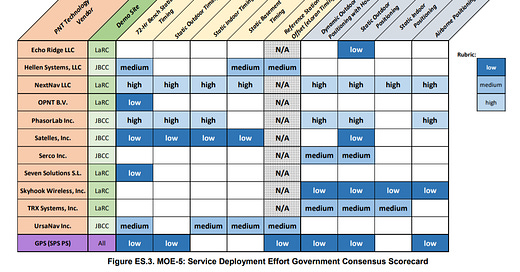The U.S. Department of Transportation last month released its Complementary PNT and GPS Backup Technologies Demonstration Report that details technologies offering complementary service in the event …
Keep reading with a 7-day free trial
Subscribe to Location Business News to keep reading this post and get 7 days of free access to the full post archives.



